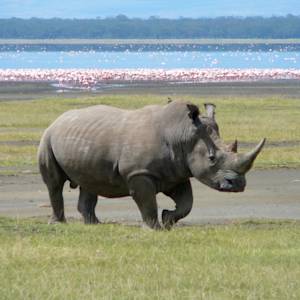Back From The Brink, Golden Lion Tamarin Monkey
1970s CE • Brazil
“Originally, the species was found all along the Rio de Janeiro state coast and reached up to Espírito Santo state. Due to the intense occupation of the state's coastal area, as well as to logging, agriculture and cattle ranching activities, followed by the consequent forest destruction, the tamarins are now confined in some 20 forest remnants.” Only 2-3% of their former forest habitat still exists. They were thought to be extinct until 200 individuals were discovered. In the 1970s, the Poco das Antas Biological Reserve and the União Federal Biological Reserve were established to provide a protected area for tamarins, and an international cooperative breeding program worked to increase the captive population of tamarins. Today, wild populations include almost 1,000 individuals. “By 2025, the goal is to increase preserved forest to 62,000 acres and provide corridors to reconnect fragmented habitat to support a sustainable population of 2,000 golden lion tamarins.”
"Golden Lion Tamarin Family,"Sevehdc, 2007.


Learn about Maya Lin’s fifth and final memorial: a multi-platform science based artwork that presents an ecological history of our world - past, present, and future.

Discover ecological histories and stories of former abundance, loss, and recovery on the map of memory.

Learn how we can reduce our emissions and protect and restore species and habitats – around the world.

See how art can help us rethink the problems we face, and give us hope that each one of us can make a difference.

Help make a global memorial something personal and close to home. Share your stories of the natural world.


